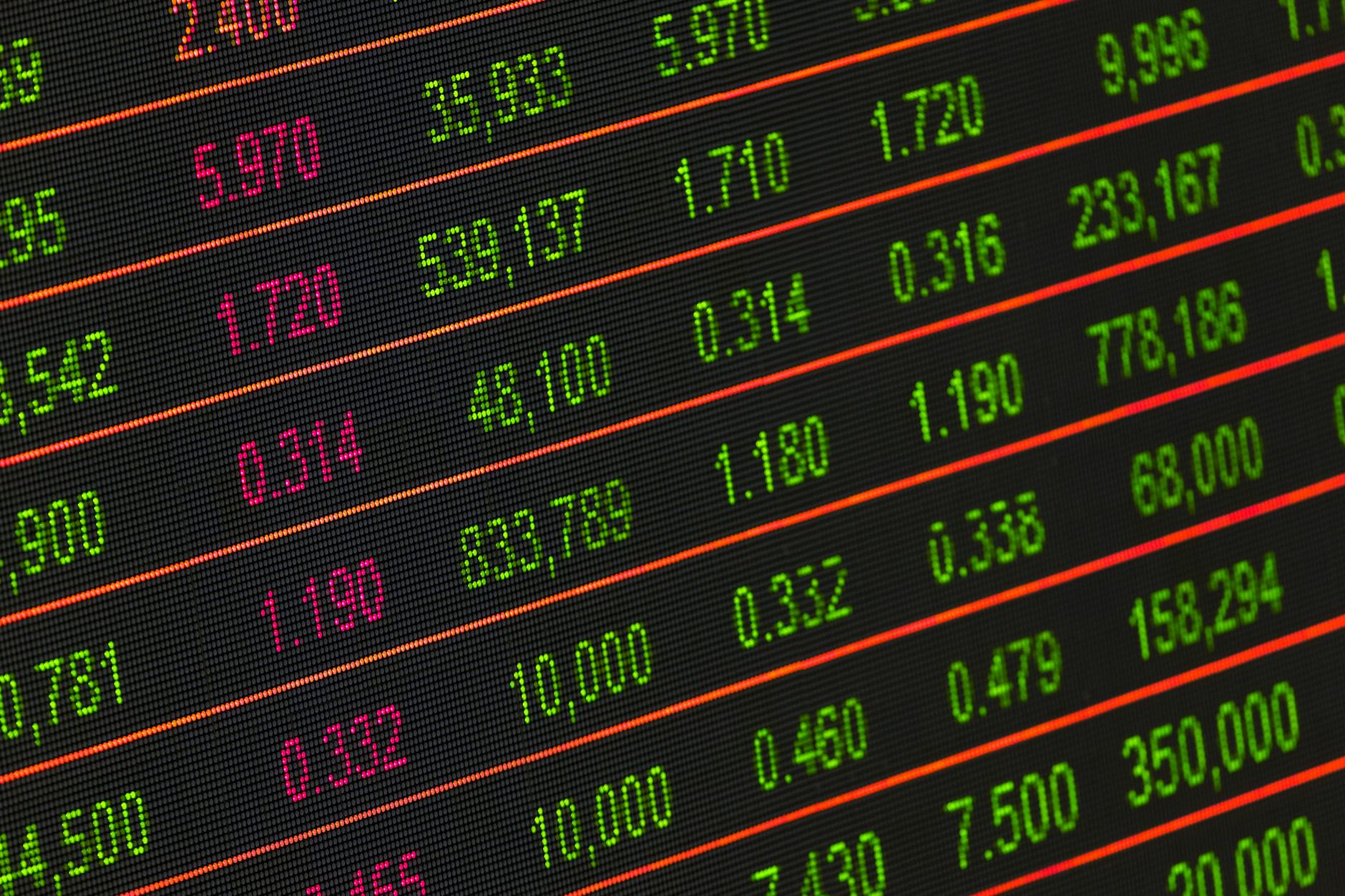What if I told you there’s a hidden Vanguard fund that has consistently outperformed VTSAX by 2.8% annually since inception? While most FIRE enthusiasts religiously invest in VTSAX, this little-known alternative could have turned your $10,000 investment into $20,000 more over the same period. Meet VPMAX (Vanguard PRIMECAP Fund Admiral Shares) – the actively managed fund that defies conventional FIRE wisdom about index investing while delivering market-beating returns year after year.
As someone who’s been on the FIRE journey for years, I’ve discovered that sometimes the road less traveled leads to better destinations. This deep dive into VPMAX vs. VTSAX might just change how you think about your portfolio’s core holdings and reveal why this hidden Vanguard gem has become my secret weapon for building wealth faster.
In this post, I’ll take you on a deep dive into why VPMAX has become my favorite mutual fund and how it stacks up against the beloved VTSAX. Whether you’re a seasoned investor or just starting out, this comparison will give you valuable insights to consider for your own portfolio.
What’s In This Article
- The Tale of Two Funds: VPMAX vs VTSAX
- Performance Showdown: David vs Goliath
- Beyond the Numbers: What Makes VPMAX Special
- The Cost of Active Management
- Turnover Ratio: A Key Metric You Shouldn’t Ignore
- Inside the Minds of VPMAX’s Fund Managers
- Is VPMAX Right for You?
- Frequently Asked Questions About VPMAX and VTSAX
- The Bottom Line: Taking Action
- Disclosure: My Personal Investment

The Tale of Two Funds: VPMAX vs VTSAX
Let’s start with a quick overview of our contenders:
- VTSAX: The darling of the FIRE community, this index fund aims to replicate the performance of the entire U.S. stock market.
- VPMAX: An actively managed fund that seeks to outperform the market by investing in carefully selected companies.
Now, I know what you’re thinking: “Active management? Isn’t that a no-no in the FIRE world?” Usually, yes. But VPMAX is not your typical actively managed fund, and that’s what makes it so intriguing.
Performance Showdown: David vs Goliath
Let’s cut to the chase: how do these funds stack up in terms of returns? Here’s a quick comparison:
VPMAX vs VTSAX: Performance Showdown
as of February 28, 2025
VPMAX
10-Year Return12.76%
+0.46% Advantage
VTSAX
10-Year Return12.30%
VPMAX
Since Inception11.30%
(Since 11/12/2001)
+2.80% Advantage
VTSAX
Since Inception8.50%
(Since 11/13/2000)
These numbers might not seem like a huge difference, but let’s put them in perspective. If you had invested $10,000 in each fund in 2002, in 10 years:
- VPMAX would have grown to $72,357
- VTSAX would have grown to $54,569

That’s a difference of $17,788! Not too shabby for choosing the road less traveled.
Beyond the Numbers: What Makes VPMAX Special?
- Downside Protection: VPMAX has historically performed better during market downturns, offering a smoother ride for your portfolio.
- Sector Focus: While VTSAX covers the entire market, VPMAX concentrates on sectors like healthcare and technology, which have been driving much of the market’s growth.
- International Exposure: VPMAX has about 15% international allocation, compared to VTSAX’s less than 1%. This gives you some global diversification without needing a separate international fund.
- Ethical Considerations: As an actively managed fund, VPMAX can be more selective about the companies it invests in. For example, it doesn’t include certain controversial pharmaceutical companies that some investors prefer to avoid.
Sector Allocation
VPMAX vs VTSAX: Sector Allocation
Data as of February 28, 2025
VPMAX
VTSAX
As you can see in the chart above, VPMAX’s sector allocation reveals some striking differences from VTSAX. The fund places a much higher emphasis on Healthcare (29.6% vs VTSAX’s 10.6%) and maintains a significant allocation to Technology, though slightly less than VTSAX (26.4% vs 33.4%). This concentration in these two high-growth sectors has been a key driver of VPMAX’s outperformance.
What’s equally important is what’s missing–VPMAX has substantially lower exposure to Financials (8.4% vs 12.0%) and virtually no allocation to Utilities, Real Estate, and Consumer Staples. This works well for us because we own real estate outside of our portfolio. The fund’s managers are making deliberate bets on specific sectors rather than trying to mimic the broader market. This active sector allocation strategy is precisely what creates the potential for outperformance, though it also introduces sector-specific risks that index investors don’t face.
This sector concentration is a double-edged sword–it has boosted returns during periods when Healthcare and Technology have outperformed, but could potentially lead to underperformance when these sectors fall out of favor. For investors considering VPMAX, understanding this sector bias is crucial to determining if it complements your existing portfolio.
The Cost of Active Management
Now, let’s address the elephant in the room: fees. As an actively managed fund, VPMAX does have a higher expense ratio:
- VPMAX: 0.29%
- VTSAX: 0.04%
While this difference might seem significant, remember that VPMAX’s returns are reported after fees. So even with the higher costs, it has still managed to outperform VTSAX over the long term.

Turnover Ratio: A Key Metric You Shouldn’t Ignore
When comparing mutual funds, one often-overlooked metric is the turnover ratio. This seemingly simple number can tell you a lot about a fund’s strategy and potential tax implications. Let’s dive into what turnover ratio means and how VPMAX and VTSAX stack up.
What is Turnover Ratio?
The turnover ratio represents the percentage of a mutual fund’s holdings that have changed over the past year. In simpler terms, it’s how often the fund managers are buying and selling stocks within the fund.
For example, a turnover ratio of 100% means that all of the fund’s holdings have been replaced in the past year. A lower turnover ratio indicates a more “buy-and-hold” strategy.
VPMAX vs VTSAX: A Surprising Similarity
Here’s where things get interesting:
- VPMAX Turnover Ratio: 5%
- VTSAX Turnover Ratio: 4%
You might be surprised to see how close these numbers are, given that VPMAX is an actively managed fund and VTSAX is an index fund. Let’s break down what this means.
The Significance of Low Turnover
- Cost Efficiency: Lower turnover typically means lower trading costs for the fund, which can translate to better returns for investors.
- Tax Efficiency: Fewer trades mean fewer taxable events. This is particularly important for investors holding these funds in taxable accounts.
- Long-Term Focus: A low turnover ratio suggests that fund managers are taking a long-term view of their investments, rather than trying to time the market or chase short-term gains.
VPMAX: Actively Passive?
VPMAX’s 5% turnover ratio is remarkably low for an actively managed fund. Many active funds have turnover ratios of 50% or higher. This low turnover suggests that VPMAX’s managers are:
- Confident in their stock picks
- Patient with their investments
- Not prone to overreacting to market fluctuations
In essence, VPMAX is behaving more like a “buy-and-hold” index fund than a typical active fund. This approach can lead to better tax efficiency and potentially lower costs.

VTSAX: The Benchmark of Stability
VTSAX’s 4% turnover is exactly what you’d expect from a total market index fund. It only changes holdings when companies enter or leave the index, or when it needs to rebalance to match the market’s composition.
This ultra-low turnover is one of the reasons why index funds like VTSAX are often recommended for their tax efficiency and low costs.
The Vanguard Advantage
The similarity in turnover ratios between VPMAX and VTSAX showcases a key Vanguard philosophy: long-term, low-cost investing. Even in their actively managed funds, Vanguard tends to favor a patient, low-turnover approach.
This is where Vanguard’s unique ownership structure shines. As a company owned by its funds, which are in turn owned by shareholders, Vanguard is incentivized to keep costs low and act in the long-term interests of its investors.
What This Means for You
As an investor, the low turnover ratios of both VPMAX and VTSAX are good news:
- Tax Efficiency: Both funds are likely to be tax-efficient choices for taxable accounts (though always consult with a tax professional for your specific situation).
- Lower Costs: Low turnover typically translates to lower overall fund expenses.
- Long-Term Focus: Both funds align well with a buy-and-hold, long-term investment strategy.
While turnover ratio shouldn’t be the only factor you consider when choosing a fund, it’s an important piece of the puzzle. The surprisingly similar and low turnover ratios of VPMAX and VTSAX demonstrate that sometimes, active management can look a lot like passive management, and that can be a very good thing for investors.
Inside the Minds of VPMAX’s Fund Managers
One of the most enlightening experiences in my investment journey was attending a presentation by VPMAX’s fund advisors before I left my corporate career. This rare glimpse into the minds behind the fund solidified my confidence in VPMAX as a long-term investment. Here’s what stood out:
A Deep Dive into Management Strategy
The fund managers laid out their investment strategy with impressive clarity. Unlike many active managers who chase short-term gains, VPMAX’s team emphasized their commitment to a long-term approach. They look for companies with strong fundamentals and potential for sustained growth over years, not just quarters.
What struck me was their patience. They’re not afraid to hold onto a stock during temporary downturns if they believe in the company’s long-term prospects. This approach aligns perfectly with my own investment philosophy of “time in the market” over “timing the market.”
Rigorous Research Process
The depth of research behind each investment decision was eye-opening. The team doesn’t just rely on financial statements and market trends. They conduct extensive industry analysis, meet with company management, and even talk to customers and suppliers to get a 360-degree view of a potential investment.
This level of due diligence gives me confidence that each company in VPMAX’s portfolio has been thoroughly vetted. It’s like having a team of professional analysts working for you, diving deep into companies in a way that individual investors simply can’t.
Multiple Perspectives, One Goal
One unique aspect of VPMAX’s management is its multi-manager approach. Instead of relying on a single fund manager, VPMAX employs several portfolio managers who independently oversee different portions of the fund.
This structure offers two key advantages:
- Diverse Perspectives: Each manager brings their own expertise and viewpoint, leading to a well-rounded portfolio that isn’t overly reliant on a single investment thesis.
- Risk Mitigation: The multi-manager approach helps prevent any single manager’s biases or mistakes from significantly impacting the entire fund.
The Human Element
Perhaps the most impactful aspect of the presentation was seeing the human side of fund management. These weren’t just number-crunchers; they were passionate investors with a genuine excitement for the companies they invest in.
Their enthusiasm was contagious, and I left the presentation feeling like a partner in the investment process rather than just a faceless shareholder.
The Takeaway
Attending this presentation reinforced my decision to make VPMAX a significant part of my portfolio. It showcased a level of thoughtfulness and long-term thinking that’s rare in the world of active management.
While past performance doesn’t guarantee future results, understanding the philosophy and process behind VPMAX’s success gives me confidence in its potential for continued strong performance. It’s as close as I want to get to individual stock picking, with the added benefit of professional management and diversification.

Is VPMAX Right for You? A Decision Framework
While VPMAX has been a winner for me, it might not be the right choice for everyone. Here’s a simple framework to help you decide if it belongs in your portfolio:
✅ VPMAX Might Be Right For You If:
- You’re comfortable with slightly higher expense ratios (0.31% vs 0.04%) in exchange for potentially higher returns
- You have a long investment horizon (10+ years) to benefit from the compounding effect of outperformance
- You’re investing primarily in tax-advantaged accounts like 401(k)s or IRAs
- You already have core index funds and are looking to diversify with a complementary “satellite” holding
- You appreciate the value of professional management in sectors like healthcare and technology
- You have at least $3,000 available to meet the minimum investment requirement
❌ VTSAX Might Be Better For You If:
- You strongly prefer the absolute lowest expense ratios possible
- You’re investing in taxable accounts where VPMAX’s occasional capital gains distributions could create tax consequences
- You want maximum simplicity in your portfolio with “set it and forget it” investments
- You have a shorter time horizon where VPMAX’s potential outperformance might not have time to materialize
- You want a single-fund solution that provides broad market exposure
Remember that diversification remains important regardless of which fund you choose. In my own portfolio, VPMAX makes up about 39% of our investments, complemented by other index funds to create a well-rounded approach aligned with my goals and risk tolerance.
Frequently Asked Questions About VPMAX and VTSAX
Is VPMAX still only available to Vanguard Flagship clients?
No, while VPMAX was previously restricted to Vanguard Flagship clients (those with $1 million+ invested), it’s now available to any investor who can meet the $50,000 minimum investment requirement. However, the fund occasionally closes to new investors when the managers feel additional assets would hamper performance, so check availability before planning your investment.
How does VPMAX perform during market downturns?
Historically, VPMAX has shown better downside protection than VTSAX during market corrections. During the 2020 COVID crash, VPMAX declined less than VTSAX and recovered more quickly. However, this is not guaranteed for future downturns, and VPMAX can still experience significant volatility.
What’s the current sector allocation of VPMAX?
As of February 2025, VPMAX has higher allocations to healthcare and technology compared to VTSAX. Approximately 26% of the fund is in information technology, 29% in healthcare, with the remainder spread across financials, industrials, and consumer sectors. This concentrated sector approach contributes to both its outperformance and its distinct risk profile.
How have the expense ratios changed since the original comparison?
The expense ratio for VPMAX remains 0.29%, while VTSAX’s expense ratio is still 0.04%. This difference of 0.25% has remained consistent, demonstrating that VPMAX’s outperformance continues to exceed its higher cost structure.
Can I replicate VPMAX’s strategy with individual stocks?
Technically yes, but practically no. VPMAX’s success comes from a team of experienced fund managers with deep industry knowledge and access to management teams at portfolio companies. The fund currently holds approximately 165 stocks, making it difficult for individual investors to replicate with adequate diversification.
What’s the tax efficiency comparison between these funds?
VTSAX is generally more tax-efficient than VPMAX due to lower turnover and fewer capital gains distributions. That’s why I recommend holding VPMAX primarily in tax-advantaged accounts like IRAs and 401(k)s where the tax implications of distributions are minimized.
How much international exposure does each fund provide?
VPMAX includes approximately 15% international exposure through U.S.-listed companies with significant global operations or foreign companies with U.S. listings. VTSAX, as a U.S. total market fund, has less than 1% direct international exposure. For proper global diversification, you should consider adding a dedicated international fund to your portfolio regardless of which U.S. fund you choose.
The Bottom Line: Taking Action
The numbers don’t lie: VPMAX has consistently outperformed VTSAX for over two decades. While past performance doesn’t guarantee future results, the fund’s disciplined management approach and long-term focus give me confidence in its continued potential.
Ready to add VPMAX to your portfolio? Here are the specific steps to take:
- Review your investment goals – Use the decision framework above to determine if VPMAX aligns with your strategy
- Check availability – Login to your Vanguard account (or create one) and search for VPMAX
- Start small – Consider allocating 5-10% of your portfolio initially while you get comfortable
- Use tax-advantaged accounts – Prioritize adding VPMAX to IRAs or 401(k)s if available
- Set a calendar reminder – Review performance annually, but resist the urge to make frequent changes
Whether you decide to add VPMAX, stick with VTSAX, or create your own custom mix, the most important thing is to start investing now and stay consistent. Even small differences in returns compound dramatically over decades.
Your future self is counting on the decisions you make today. Which fund will you choose for your journey to financial independence?
Disclosure: My Personal Investment
In the interest of full transparency, I want to disclose my own holdings as they relate to this article. Currently, VPMAX constitutes approximately 39% of my personal investment portfolio. I also hold VTSAX, which makes up about 3% of my portfolio. The remainder is divided among other index funds, bonds, cash and a small allocation to individual stocks.
My positions in both funds discussed here were established before writing this post, and I do not plan to make any changes to these holdings in the immediate future based on this publication.
My investment decisions are based on my personal financial situation, risk tolerance, and long-term goals. Your circumstances may differ, and you should make investment decisions based on your own research and possibly in consultation with a financial advisor.
What’s your take on VPMAX vs VTSAX? Do you have a favorite fund in your portfolio? Let me know in the comments below!
Disclaimer: This post is for informational purposes only and should not be considered financial advice. Always do your own research and consult with a financial professional before making investment decisions.






Thank you for the post. I ran the numbers today-July 2024 and they hold up. I also would recommend VHCAX-Vanguard Capital Opportunity Admiral as part of the mix. As you mentioned these funds are closed unless they are offered via a 401K or smooth sailing on the Flagship.
You’re welcome. The great news is that VPMAX is now open again! I’ll check out VHCAX. Thanks for reading.
[…] José with Crucial Wealth, a former Vanguard employee, challenges our beloved VTSAX. Why I Prefer VPMAX over VTSAX. […]
I love the detailed comparison, and I’m impressed that VPMAX managed to outperform even with that increased international exposure. The increased mid-cap allocation may be a contributor. As you point out, the tax-inefficiency suggests that you only own this (and other actively managed funds) in a tax-advantaged account.
Great post, and it’s always good to challenge conventional wisdom.
Cheers!
-PoF
I agree that the mid-cap allocation may have contributed to outperformance. Thank you for your valuable insight!